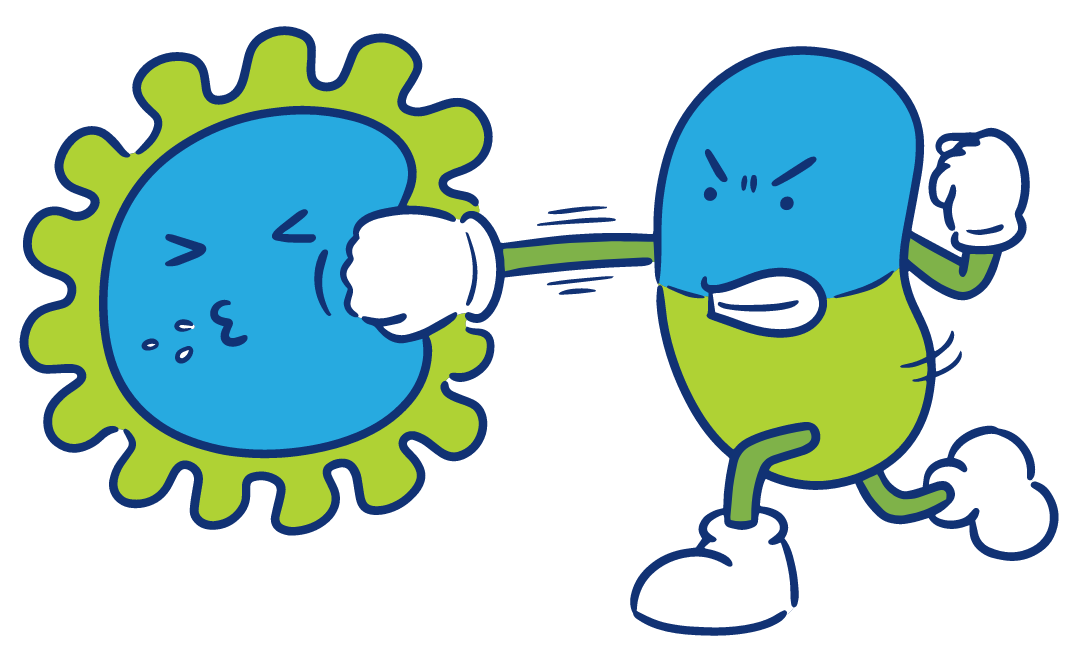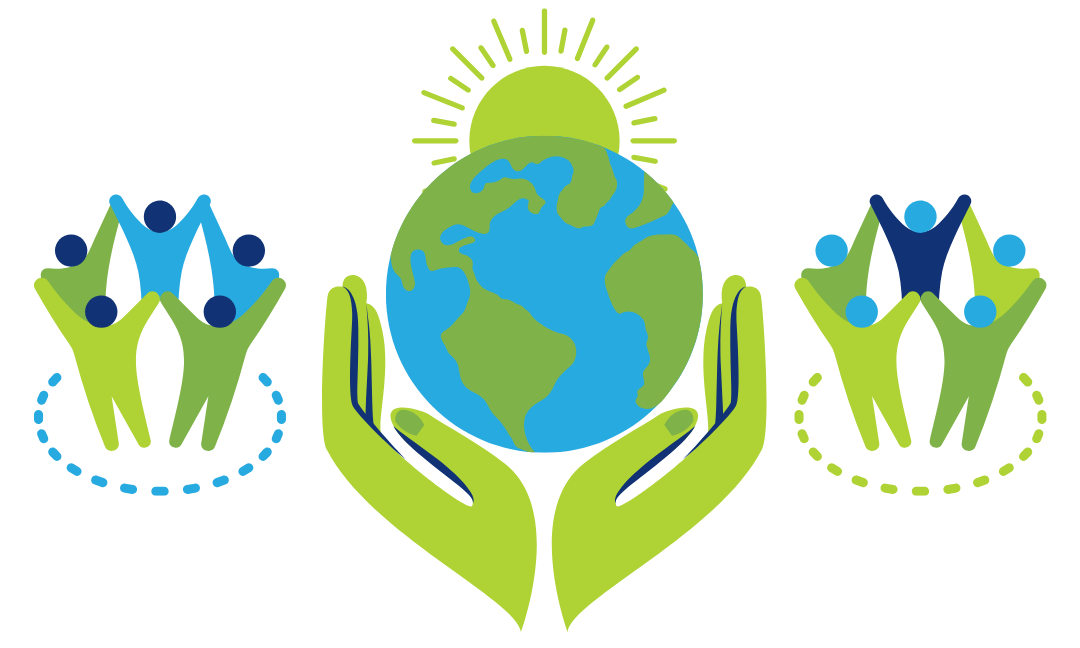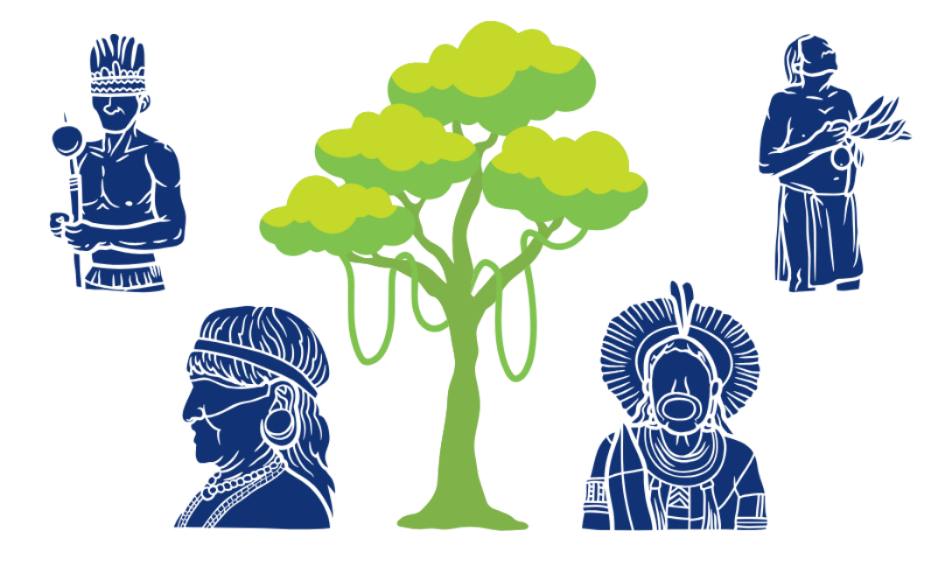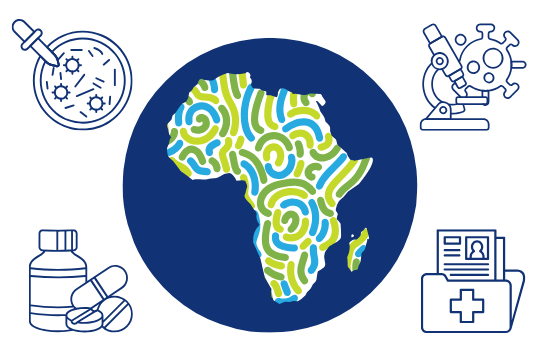
Two centuries ago, people could die from a simple scratch. It was the pre-antibiotic era when infections killed babies within hours, a cold could turn deadly within days, and people survived injuries through luck alone.
Now a pill can prevent strep throat from turning into scarlet fever and antibiotics keep surgery safe. But because bacteria evolve and mutate so quickly, many drugs are powerless against new strains. The world needs new and better antibiotics.
In this episode of One World, One Health, Anand Anandkumar, co-founder and chief executive officer of Bugworks, explains what his company is doing to help discover and develop new antibiotics. Antibiotics are not big money makers for pharmaceutical companies, so Bugworks is putting together funding from governments, charities, and a new kind of motivated investor.
Listen as Anand Anandkumar tells host Maggie Fox about what his company is trying to do.
Maggie Fox
Hello, and welcome to One World, One Health with the latest ideas to improve the health of our planet and its people. I’m Maggie Fox.
Planet Earth faces many challenges: pollution, climate change, and new and reemerging infectious diseases such as COVID. This podcast is brought to you by the One Health Trust with byte-sized insights into ways to help.
In this episode, we’re chatting with Anand Anandkumar, co-founder and chief executive officer of Bugworks, a biopharmaceutical company based in India that’s working to develop new antibiotics to treat drug-resistant superbugs. Anand, thanks so much for chatting with us.
Anand Anandkumar
Thank you so much for having me on your show, Maggie. I’m looking forward to the chat.
Maggie Fox
And now let’s talk about why the world needs new antibiotics.
Anand Anandkumar
Maggie, it’s actually a multi-layered problem. The last new class of broad-spectrum antibiotics happened in the 1960s. And then we had some other new antibiotics happening in the 1980s. So if you look at the pipeline of antibiotics, Maggie, it’s very, very thin. We are sitting with around five to six classes of antibiotics. That’s it since penicillin days, which happened 100 years ago, so 100 years have gone by, you have about six classes of antibiotics. The last novel class of antibiotics happened in the 1980s. The last novel broad spectrum happened in the 1960s. The pipeline is absolutely anemic.
At the same time, the world has changed to where today we’re an upwardly mobile world so drug resistance that happens in one part of the world can easily spread to the other as we’ve seen with SARS-CoV-2 and other illnesses. So suddenly you have this mobility that has exploded in the last 20-25 years to where we are all traveling and we are all meeting like we’ve never done as a humanity before. There is no antibiotic pipeline to speak about. We have abused antibiotics in many parts of the world: overused it or not used properly, misused it to where we have shown bacteria what bullets we have you know? That’s the easiest way I can explain it. You have a limited set of armament and you’ve already exposed that armament over- exposed that armamentarium to bacteria that have had enough chance to adapt and change themselves and become resistant to the antibodies.
So look at The Perfect Storm- a massive increase in drug-resistant bacteria, massive mobility so people and genes are traveling all over the world, and a static anemic antibiotic pipeline. A perfect storm for bacteria to have a feast over time and unfortunately, bacteria are gaining over us. That’s why we need to really kickstart, jumpstart, and leapfrog on novel anti-infectors.
Maggie Fox
Can you tell us about some of the drugs your company’s working on?
Anand Anandkumar
Our company was put together in 2014. We are about eight years old. And this company came about from a lot of folks who used to work in AstraZeneca. AstraZeneca is a large pharmaceutical company, they had an outstanding infection team in India. AstraZeneca decided to walk away from infection because there’s more money to be made in oncology and diabetes and other areas. I just started Bugworks at the time. And I was very lucky to find such wonderful talent. I come from an electrical engineering modeling and simulation background. So we juxtaposed engineering talent with biopharmaceutical talents like never before to put together Bugworks.
What is Bugworks working on? We’re actually working on a completely novel class of broad-spectrum anti-infective. Maggie, if successful, would be the first of its kind since the 1960s. I use the word 1960s because that’s when we had the fluoroquinolones which most people use today. It’s called ciprofloxacin, norfloxacin, anything with a Floxin or ofloxacin on it. These all came from the 1960s and they’re still in use. So we are working on a broad-spectrum antibiotic that is somewhat similar to fluoroquinolones but different. It obviously works on bacteria that are able to evade fluoroquinolones and we have an IV and an oral. It’s very hard to get a new class of antibiotics for it to be IV and then also get the oral aspect of it to work. So you can cover patients in hospitals and you can cover patients in community settings.
So we work via a mechanism called DNA replication. We prevent the bacteria from reproducing through DNA replication, we hit the bacteria in two targets. So it’s like hitting your enemy in the head and the heart very hard for the enemy to bounce back from two bullets. And we have been tested on 12 to 14,000 superbugs from across the world. And I’m happy and humbled to share with your audience that we are truly broad spectrum. We work on nasty bugs that cause pneumonia, to urinary tract infections, to stomach infection, to bloodstream infection. We also work on bioterrorism pathogens. So we are very excited but all of this excitement needs to translate into clinical trials. So we should stay humble and extremely cautiously optimistic.
Maggie Fox
Can we talk a little bit more about what you mean by broad spectrum? What’s a broad-spectrum antibiotic?
Anand Anandkumar
That’s a very important question. If you hit a target in a bacteria, and that target is found only in one or two types of bacteria, then it’s called a narrow spectrum. There are millions of bacteria. But typically there are about 10 to 20 bacteria that cause 99% of the illnesses. You know, when we talk about urinary tract infection, abdominal infection, bloodstream infections, pneumonia, meningitis, skin infections, if you add what I just said, six to seven most common infections, they are caused by about 10 pathogens.
So if you have an antibiotic that’s able to hit a target, and that target is available in those 10 bacteria, or most of those 10 families of bacteria, you call that a broad spectrum. So the same asset is able to be used because it kills A, B, C, D, E, F, G, H, I, J, you can potentially use such an asset for multiple indications, as opposed to a narrow spectrum that only works on A and D. it’s still important, but it only works on A and D, so it can only be used for a particular type of urinary tract infection, or a particular skin infection, or a particular bloodstream infection.
You need both. You need the broad and you need the narrow. Typically you try to start with broad, so you broad brush and try to save the patient because you don’t know what the hell is going on and then you step down to a narrow spectrum because you know what’s going on. So start broad brush, and then you go to fine. So you need both. But typically patients in ICU, in parts of the world like where I come from Maggie, which has really rampant antimicrobial resistance, drug resistance, have multiple bugs in the system. And it’s nice to have a broad spectrum to clean multiple bugs, stabilize the patient, and then step them down to a narrow spectrum. So we are focused on broad (spectrum).
Maggie Fox
Talk to us a little bit about what happens to a patient who is infected with one of these antibiotic-resistant bacterial strains. They’re in the ICU, they’re really sick.
Anand Anandkumar
For your audience, I must let you know that the Lancet paper came out in January of this year that said that five million people are dying worldwide, owing to AMR indirectly at 1.4 million directly. Most of it is happening in the low to medium income countries. But the United States is also seeing a high increase in hospital-acquired infections. COVID has exacerbated this problem, right? Because viruses and bacteria hunt in pairs, the virus comes in, weakens our immunity, and then we pick up a bacterial infection as a secondary infection.
So to your question, when a patient goes into a hospital, and you pick up a hospital-acquired infection… and that bacteria by the way, it’s the bacteria that’s drug-resistant, not the patient. Some people think the patient is resistant, it’s the bacteria in my system that is not working on the first line of antibiotics, then you get worried. Then you do a culture study, and you hope to find at least a few ‘S’ for sensitive not all resistance. Today, when you see the map coming out from many countries like India, resistant, resistant, resistant, resistant, resistant, sensitive, resistant, resistant; it’s so scary That’s a worst map and we’re seeing patients where it’s all ‘R’ and then of course that’s really, really bad. But typically the first line antibiotics don’t work, then you try the second line, then you try the third line, then you try the fourth line, and then pray and hope that’s the highest antibiotic in your armamentarium can take care of the patient.
Meanwhile, the patient is spending much more time in the hospital, they may pick up anti-fungal infections as well along with bacterial infections, and the patient load becomes so high, they may go into sepsis. You don’t have time. In infection, most of your people should know that, although it is not a very dramatic disease like oncology, that all of the drug discovery dollars going in, infection kills quite quickly. You know, people who go to a hospital to get an operation and they pick up a superbug, unfortunately, they get a high fever, and they move to sepsis in about 48 hours. Sepsis simply means that the body is shutting down because the bacterial load is so high, the inflammatory mechanisms are so confused and their own inflammatory system starts bombarding your organs causing organ failure.
So this is what happens to a patient who’s drug-resistant, first line, second line, third line, you pray and hope that the highest antibiotics work and then you try combinations of antibiotics, and hopefully you save the patients. But if we are losing five million worldwide, this is not a good situation. If this is not a pandemic, what is a pandemic? It’s incredible that this is year on year, at least COVID has come and hopefully gone now and we hope we don’t have to relive something like COVID but AMR…Maggie is happening year on year, so it needs to be addressed.
Maggie Fox
So you’ve painted a picture here of a very sick patient who’s dying fast. That’s why you need a broad-spectrum antibiotic that will work very quickly in the patient, right?
Anand Anandkumar
Once you get to the end of antibiotic-resistant infections, you don’t have any time.
You don’t have any time. And I’m not trying to push the broad spectrum because we work on a broad spectrum. Typically, clinicians prefer a broad spectrum when you’re dealing with serious hospital infections, because you don’t know whether a single type of bacteria has caused that infection, or whether multiple families of bacterias are colluding to cause it. So, in countries like India, China, Brazil, Russia, look at most of the other parts of the world, the preference is broad spectrum.
Now Maggie, broad-spectrum does come with some drawbacks because it can also impact your gut flora, right? Which is called the microbiome. And that may also promote antimicrobial resistance because we are all born with that microflora and flora that you don’t want to destabilize it too much. So there are side effects with the broad spectrum. But once you save the patient, you can always give them yogurt, probiotics, and prebiotics and rebuild their gut microbiome. So you do need strong broad spectrums for serious hospital infections and then step it down to a narrow spectrum.
Maggie Fox
So I mean, this is a big need. These are drugs that lots of people need. Why is it so hard to get companies to work?
Anand Anandkumar
Beautiful, beautiful. That’s the most important question. The reason is very simple. It’s economics, economics, economics. It’s the economics stupid, as someone said, right? The reason is as follows. Just think about it.
The pharmaceutical industry works by volume. Think about people who are on statins, for cholesterol reduction, or a blood pressure medicine, or insulin for diabetes, once that patient is on those drugs, they’re pretty much going to be on those drugs for 20, 30, 40 years or probably lifelong. Take an antibiotic. The last time you and I took an antibiotic was five days. If you’re in the hospital, maybe seven days, worst case, 10 days. So the usage is very asynchronous. It’s when you need it, you use it. And then you have a drug like mine, of people who are working on novel drugs, spending 10 to 12 years, maybe half a billion to $700 million to design a drug. And then I’m hoping that my drug is not used. It’s only used for the worst patients. It makes no sense. So you do drug discovery, you come up with a novel antibiotic, you keep it under lock and key for your worst patients. So it’s really life-saving for that family and for the patient. But then you use it less and less.
An antibiotic is the only pharmaceutical class of drugs, Maggie, for you and the audience, where the more you use it, the more drug resistance picks up, it’s just natural selection. Bacteria have been there for millions of years, they will be there for millions of years after humanity is gone. So they figured out how to build resistance. So the moment you put an antibiotic, there will be at least a handful of bacteria that know how to swim against the tide. Right?
So long story short, no volume, new antibiotics become last-resort drugs. So without that kind of money, the pharmaceutical industry says forget it. And today, 90 to 95% of all innovation in the universe that is supported by mechanisms CARB-X are with small companies barely alive, like Bugworks of the world. So while I’m proud that we are holding the flag as high as we can, it’s a scary thing to know that there are no big pharmaceutical partners, we have to swim and figure out how to get to the Island.
Maggie Fox
So how are you going to make money so that you can stay in business and make this drug?
Anand Anandkumar
Multiple ways. There are new regulations that the United States is looking at. Because Maggie, let me be very clear for the audience. We have very few antibiotics in the pipeline, we are losing existing drugs. So this is a huge problem. It’s a pandemic on your face. It’s called a silent pandemic because it doesn’t have the massive spread patterns of SARS-CoV-2. But it’s quietly killing people, our friends and you know, in neighborhoods. So how are we going to survive?
If I spent a billion dollars and 12 years to come up with the antibiotic and make 50 million per year, the company will close. So many companies that came out with novel anti-infectives in the last six to seven years have closed after they’ve got a US FDA registration. So the United States is taking leadership as are the UK and other countries to say wait a minute, maybe we should treat antibiotics as an infrastructure. And just like your paying for an expensive fighter plane, or like an expensive ship that you hope you’ll never use in war. They tried to look at antibiotics as an infrastructure to say, don’t worry about volume, if you crack the superbug and if you register a novel antibiotic with US FDA, we are going to give you an assured sum of money if you cross the line.
So this law is called Pasteur, like Louis Pasteur. It’s sitting in Congress. And we are hoping that in the next 12 months, it will pass. With bipartisan support, there seems to be excellent support from both Republicans and Democrats. So it’s bipartisan and bicameral support. So please pray it passes, Maggie, because then there is a chance that many more companies will get into antibiotics because you’re assured of some returns if you solve an infrastructure problem for society.
Maggie Fox
So in short, you’re hoping that legislation will pass in Congress, under which the US promises to pay for your drug upfront?
Anand Anandkumar
Upfront over 10 years. So it’s like, they put X number of dollars and say, hey, if you register the United States, and allow us to stockpile your dollars, so Medicare, Medicaid, CMS, everything can have access to our drugs. So it’s a Netflix model, it’s called the Netflix model where they’re paying a subscription. You know, and then you don’t have to worry about whether you’re binge-watching it, or you’ll never, never use it, correct? So we’re hoping because once the United States does that, the cascading effect is likely to happen, at least in the G-20 countries, because this is a big problem. And pharmaceutical industries will not come back into this space, unless there’s some dollars on the table.
Maggie Fox
What a fascinating conversation. Anand thanks so much for spending some time with us.
Anand Anandkumar
Thank you so very much. I really appreciate your questions, and I wish everyone the best of health and happiness.
Maggie Fox
Listeners can share this podcast, which is brought to you by the One Health Trust by email, Twitter, or your favorite social media platform. And let us know what else you’d like to hear about at [email protected] Thanks for listening!
Guest

Dr. Anand Anandkumar is the CEO of Bugworks, a biotechnology research company that is developing a novel class of broad-spectrum antibacterial agents and immunotherapies to address important unmet needs in antimicrobial resistance (AMR) and immuno-oncology. Before Bugworks, he was co-founder and MD at Cellworks Research India Pvt. Ltd, a company that pioneered the use of systems biology and semiconductor technologies in creating directed therapies in cancer care. Before Cellworks, Dr. Anandkumar spent 18 years in the semiconductor industry, donning technical and global-executive roles in the USA, EU, Japan, China, and India. He is also a co-founder of Impres Healthcare, an incubator promoting innovation in biomedical sciences. He serves as a member of the GARDP India advisory board, a member of the Board of AMR Industry Alliance, Vice President of the India Biotech Association, and a founding member of the India Electronics and Semiconductor Association (IESA).
Credits
Hosted and written by Maggie Fox
Special guest: Dr. Anand Anandkumar
Produced and edited by Samantha Serrano
Music composed and sound edited by Raquel Krügel
Transcript created by Harsh Pingle







